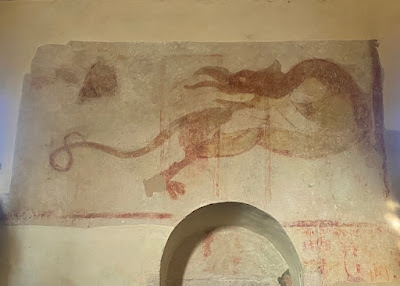Local industry
Many people visit the Cotswolds, and most of them come to see quaint limestone cottages and medieval churches, and to walk in the hills along the many waymarked footpaths, taking in stunning views of vale and hill as they go. They come for rural beauty and tranquility, but many of them end up in the most popular showcase towns and villages, from Chipping Campden to Lower Slaughter.* They find find what they’re looking for, but also sometimes what they don’t expect, like surviving evidence of past industry, from cloth-weaving to corn milling, for Cotswold sheep produced wool from which cloth was made and Cotswold people needed flour to make bread. The area is crisscrossed by fast-flowing streams that provided water power for some of these industries.
So it was at Lower Slaughter, which is mainly a stone village that also contains this former corn mill, built partly of brick. There was a corn mill here at the time of Domesday Book, drawing water power from the local stream, the River Eye. In the 18th century, the mill was rebuilt partly in brick, and at some point steam power must have taken over from water, hence the chimney. The millstones turned to grind corn into flour until 1958, when it closed, no doubt unable to compete with larger mills elsewhere. From the late 20th century until the very recently, the mill was a tourist attraction, with displays showing the history of the village and its mill and where visitors could still see the round stones that ground the corn and the other mill machinery.
Although according to online sources, corn ceased to be ground in the 1950s, I’m sure I remember visiting the mill in around 1997 or 1998 and buying a bag of flour ground there. Perhaps the flour was ground at another site belonging to the then owners? Maybe one of my readers could enlighten me. There was certainly a shop and tea room on the premises until recently.
However, the mill is now closed to tourists and its future is uncertain. But at least visitors can still see its impressive chimney and water wheel, evidence that, for centuries, there was more to the Cotswolds than agriculture and quaintness. I hope the building finds new owners who can find a use for it and preserve it.
- - - - -
* The name Slaughter has no macabre origins. It comes from an Old English word for ‘wet land’.




